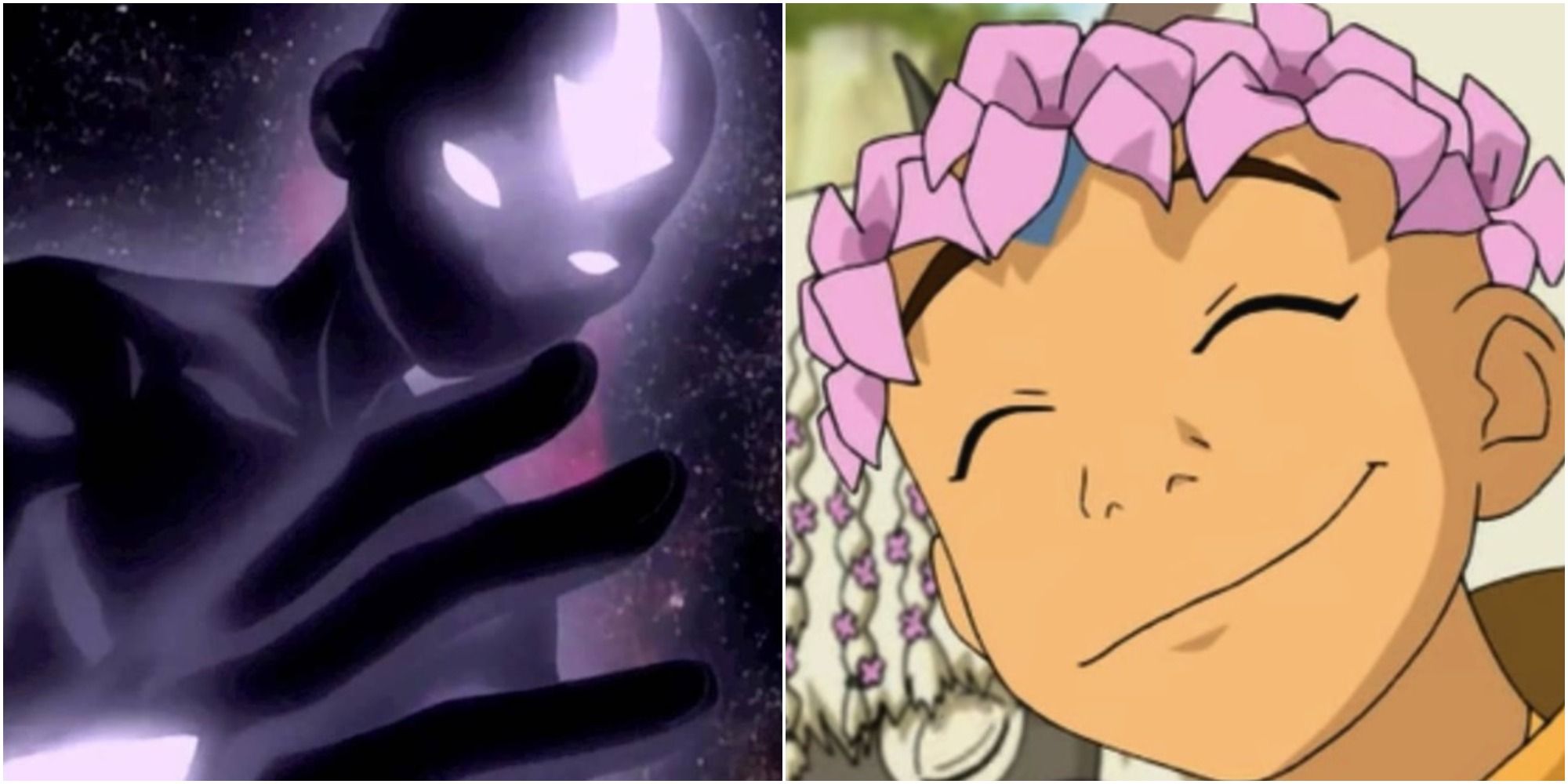
Although a completely Western product, Avatar: The Last Airbender can be considered a shonen anime based on themes, character designs, and battle sequences. The narrative borrows considerably from Eastern culture, the protagonist is a twelve-year-old boy, and the villains are sometimes stretched to the point of hyperbole.
At the same time, Avatar exhibits several distinctive elements that clearly set it apart from shonen, shattering the genre's most worn-out tropes with sensitivity and sophistication. The plot might be simplistic, but the story can hardly be described as a cliché.
10 Narrative Exposition Is Minimal

While not every shonen anime is guilty of over-exposition, there are way too many that support the trope. Fortunately, Avatar doesn't ramble through its various storylines. More importantly, fight sequences aren't extended over the course of several episodes.
The show ensures that the plot is streamlined, tossing out extraneous scenes and retaining only the impactful moments in the narrative. The best stories are told in a limited number of words, and anything more than that is usually unnecessary.
9 The Protagonist Is Incredibly Charming And Adorable

In all fairness, there are lovable shonen protagonists like Tanjiro Kamado from Demon Slayer and Izuku Midoriya from My Hero Academia, but a large fraction of them can be classified as "punk-ish."
Bleach's Ichigo Kurosaki is terse and aloof, FMA: Brotherhood's Edward Elric is hot-headed, and Attack on Titan's Eren Jaeger is ridiculously melodramatic. In comparison, Aang is a gentle boy with a pleasant disposition: teenage rebellion has no place in his cheerful life.
8 The Power Scaling Is Believable

Power scaling is a necessary component of shonen anime, but there is little consistency in the rate of power appreciation. Characters in Dragon Ball and Gurren Lagann achieve enough strength to wipe out entire universes, while scaling in Hunter x Hunter and Naruto occasionally conflicts with itself.
Power levels in Avatar rise in proportion with the emotional development of its characters, linking ability with maturity. There are, of course, a few outliers like Azula and Ozai who don't seem to comprehend that power comes with responsibility.
7 The Story Isn't Based In And Around Japan

Although not universally the case, shonen anime tends to be set in Japan, or, at least, around Japanese culture. Prominent examples include Jujutsu Kaisen, My Hero Academia, One-Punch Man, Yu Yu Hakusho, and Gintama, among others.
Avatar's world is divided into four major regions, each representing a classical element, but it must be noted that the characteristics of the four nations correspond with real-life cultures, three of which have originated in Asia.
6 Character Outfits And Appearances Aren't Exaggerated

Avatar characters have large eyes and wide smiles, physical tropes that correspond with a lot of shonen anime out there. Their emotional reactions tend to be over-the-top, partly to relieve the dramatic tension of a particular storyline.
On the other hand, they don't sport neon pink hair like Saiki from The Disastrous Life of Saiki K. does or wear uncomfortably tiny uniforms. In fact, characters in Avatar appear to follow the beauty trends of their respective societies, aspects of realism that the shonen genre doesn't always subscribe to.
5 Fanservice Is Out Of The Question

Fanservice, specifically of the sensual kind, has become a highly contentious presence in shonen anime. Series like My Hero Academia, One Piece, and Bleach contain dozens of scenarios in which female characters are depicted in either scanty clothing or revealing poses (or both).
This is especially problematic because these fashion choices have no relevance to the plot whatsoever. Avatar depicts its characters in sensible outfits that fit the situation they are in at any given time, with skimpy clothing being aptly reserved for episodes like "The Beach."
4 The Protagonist Isn't The Whole Picture

Shonen protagonists are almost always bathed in limelight, whether they enjoy all the attention is irrelevant. They accrue more power than all of their peers, surpassing even their mentors, not to mention the fact that the narrative in its entirety often revolves around the protagonist.
Aang is arguably the most important character in the series, but his dreams, ambitions, and experiences are not the focus of the story. In fact, Avatar covers the lives of various characters with as much depth as it does the protagonist.
3 There Is No Filler Whatsoever

Filler episodes are the bane of shonen anime, and some have whole arcs filled with filler material, something a certain series about an orange-haired Shinigami is accused of.
There are innumerable reasons for the presence of filler storylines in shonen anime, but their lack of canonicity can be quite vexing to fans. Avatar steers clear of the concept by a wide margin; nearly every episode includes events that further the plot and/or develop the characters.
2 Women Are Celebrated, Not Sidelined

There are many notable female characters to emerge from the boy's club that is shonen anime, such as Yu Yu Hakusho's Genkai, FMA: Brotherhood's Olivier Mira Armstrong, and Biscuit Krueger from Hunter x Hunter.
These women have earned the right to have their stories told and respected, but they unfortunately remain side characters despite helping forge paths for the hero to take. In Avatar, Katara, Toph, and, to an extent, Azula prove that female characters aren't merely there to be stepping stones for Aang.
1 Tender Masculinity Is A Focal Point Of The Story

Shonen anime treats the concept of masculinity as synonymous with strength and power, often giving protagonists the license to run loose with their powers.
Aang, however, consciously chooses the path of least aggression and refuses to inflict violence on opponents as sly and dangerous as Fire Lord Ozai. Tender masculinity is present in a number of Avatar subplots, several of which trace Sokka's journey as a young man of the Southern Water Tribe.
0 Comments